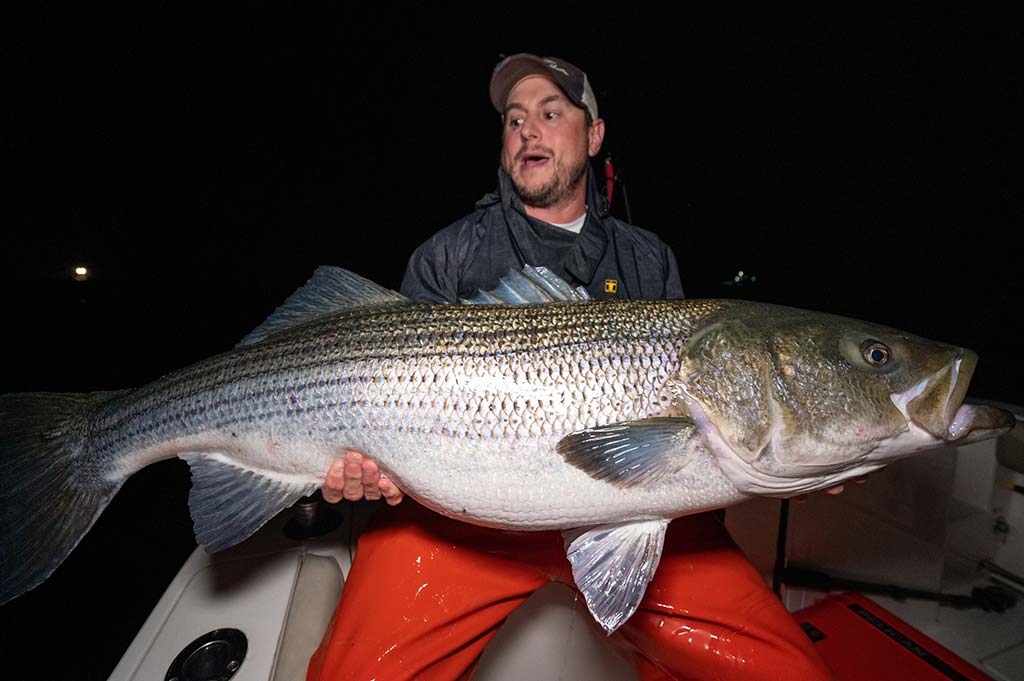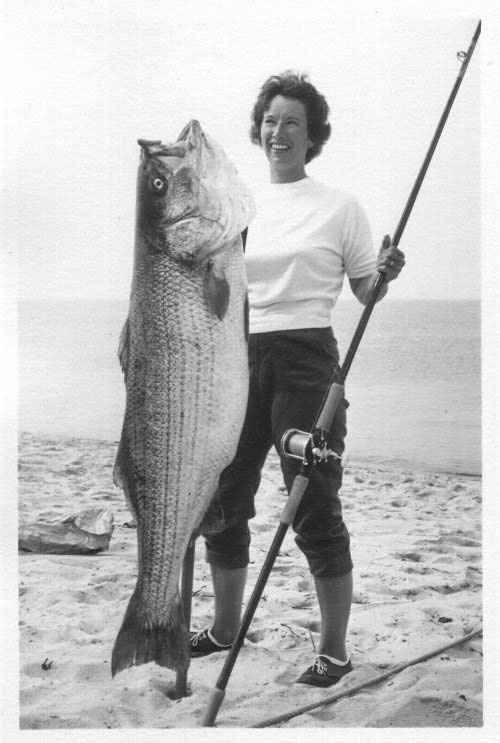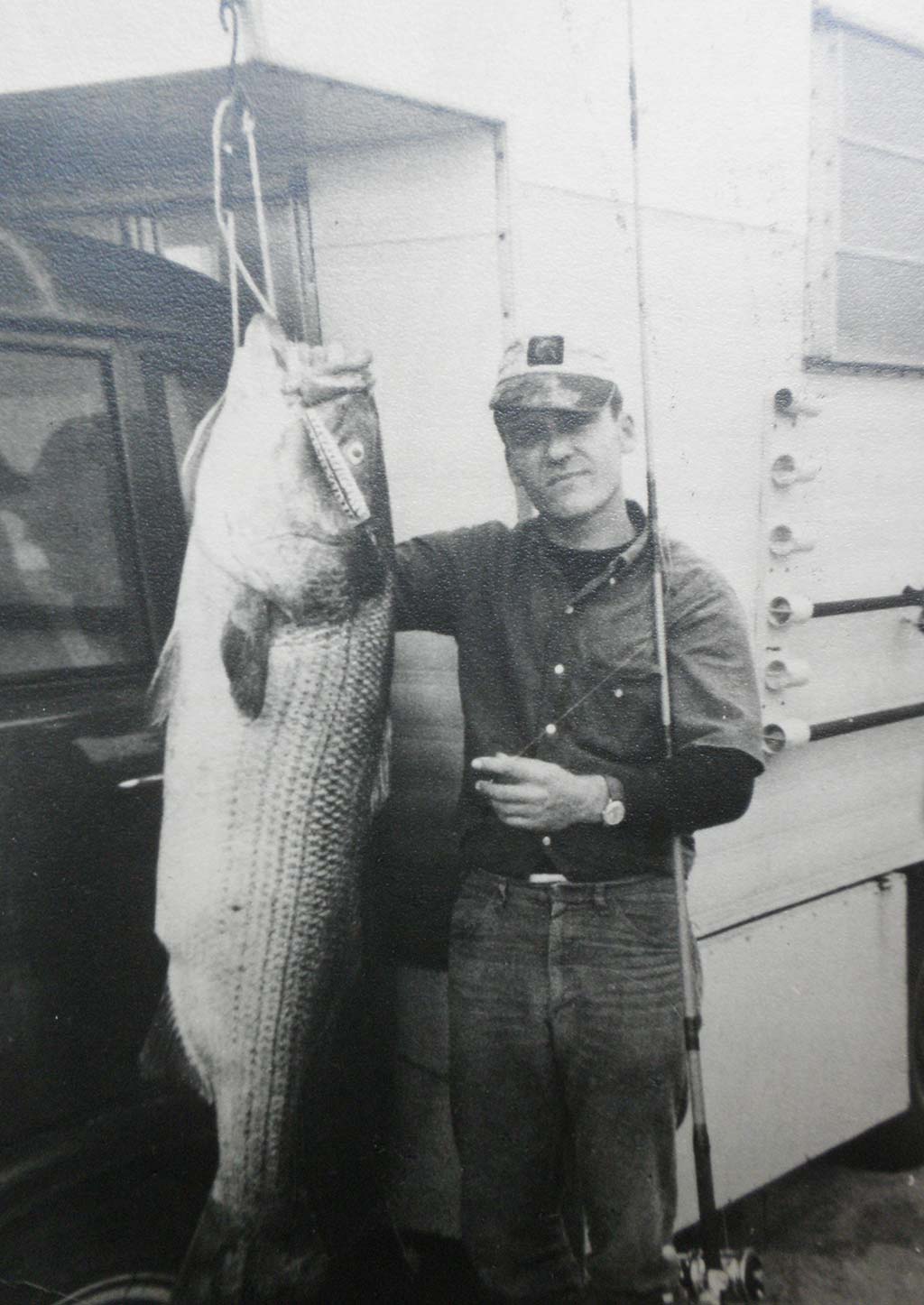
Monsters through the ages: how do the Glory Days compare to today?
Someday, if you are lucky, you are going to experience a major event that will challenge your ability to understand that striper history is in the making. Where and when a school of outsized stripers will show is a roll of the dice. We do know many of the places where it has happened before, even repeated.
Historical Hotspots
Cape Cod’s Nauset Beach, Provincetown, Cuttyhunk, the Cape Cod Canal, Montauk, Block Island and Charlestown, RI have all had their turn to provide wild fishing for the better stripers caught of their time. Social reasons for why these spots have excelled vary between the skills used in fishing them, luck, and the capricious behavior of the stripers themselves. It can get wildly good in a spot today, repeat again tomorrow, or never happen again. It’s the dice again. Much about where the best fishing has occurred is widely known in sport fishing. What is not known is when it will happen. Finding out is one thing, predicting it is another.
Known Producers

One reason why a particular location gets so much play from sport fishermen is that it is a place where they are allowed to go: a common problem for surfcasters. For instance, there was a time when the Cape Cod Canal only had modest angling appeal. However, the closure and over-regulation of the Outer Cape sent a lot of anglers to the Canal for fishing. It has become a popular place for directed angling effort leading to more fishing by more fishermen. Another cause might be word of good charter fishing in some waters that can influence a run on well-known skippers, who really do the catching, and who use their skills to fish the rips of a place like Cuttyhunk. Then there are the arbitrary events that happen one year then never again. We fished the P-Town surf for years never seeing or hearing of a 50-pound plus striper. Then in 1977 everybody, including my wife, caught one. Boat fishermen couldn’t get arrested.
In 1960 a contingent of very large stripers moved into some shallow bars in North Truro that surfmen could not reach and boatmen bagged and tagged some of the biggest stripers ever known, many well into the 60-pound class; ask Kay Townsend and Rosa Webb about their respective Ladies All-Tackle World Records. The men in their lives also caught big bass – 50s and up. Those monster fish hung out all in the same place and were drawn down in their numbers until just about all of them were caught. It was years before such fish were seen again in P-Town; 17 years to be exact. Here today, gone tomorrow; seems I read that somewhere. They don’t come back here then show up over there. Mysterious. You have to screw around with these fish for a lifetime to see it. I have.
Contingents
People do sometimes catch a lucky stray monster. The problem is that the lucky angler really never finds out if he or she caught one that had lost track of its schoolmates or was the only moby striper around. Of course the angler is so overcome with surprise and delight that he or she could not care less which is the case what with the realization that he or she just caught a freaking cow, probably his or her best.
That said, I do believe in the notion of contingents which is a behavioral term that I brought to striper fishing back when your uncle was learning how to spool line onto his Squidder. I theorized that big stripers often school up according to size for survival purposes. As a result, we will commonly have a whole bunch of big bass hanging out together like they did for Kay and Rosa in North Truro in 1960.
In 1969 in Charlestown, RI three of us fished the beach in what had been largely chosen because it was a place where we were allowed to go. I had caught a stray 50-pounder a couple of years before but half the time I was in bed by midnight – which is sacrilegious for a surfcaster.
While on the Cape, Ray Jobin, my Rhode Island boat contact, sent me a postcard saying, “They stocked the pond” – a clear signal for me to get off the Cape where I had been hauling tons of bluefish. Don’t tell anyone but Charlestown was hotter than a pistol. That year, I caught two bass over 50, my brother, Norman, a 50 even and Butch Calkins a 55. It was like a freaking dream. Nevertheless, it took all season for the three of us to catch those four cows. Ray Jobin did that in one night! Most 50s are boat fish anyway. We were the only few that knew about Charlestown in 1969.
Block Island is only seven miles straight south from Charlestown. Surely you have heard about the slaughter fishing they had for years there from both boat and surf. During the 80s regulars wouldn’t walk 20 feet to look at a 60-pounder. Worse, your not-so-modest reporter, me, would have been in therapy had he known it at the time. Papa used to say, “You can’t be everywhere.”
Nauset Gets A Bunch
In 1980 young Long Island angler Steven Pietri got a striper over 50. The teenaged surfcaster brought it to Wally Brown for mounting which was something commonly done at the time. The kid drops the fish and the next night gets one bigger. We are not talking schoolies here. Fall fishing at Nauset produced uncountable 50s, but by then I had to go back to work as a teacher and I only saw weekend fishing.

Annual Counts
Regulation and custom evolutions no longer permit the counting and killing that was carried on in the old days when we killed and weighed everything we caught. Back then the best year I recall produced around 225 stripers over 50 coast-wide. The numbers were good because of accurate annual compilations maintained by the Schaefer Brewery and Ashaway Nifty-Fifty. Such monsters were validated by sworn affidavits on tested scales by certified weighmasters. The big fish of today are commonly inaccurate guesstimates by a combination of voodoo, inch-per-pound total length which skews the results, as well as a burning desire to make the “I caught a 50” claim. The only way to truly determine fish weight is on a scale which is impossible if an angler complies with no kill regulations. The formula, fork length x girth squared / 800, is good as long as fork length is used not total length. The use of total length in the formula makes all 45-pounders weigh 50.
I think there probably are as many 50s today as the best years past but today’s regulatory environment is not conducive to measurement because they have to be released.
Frank Daignault is author of The Trophy Striper as well as many other books of fishing the striper surf.




